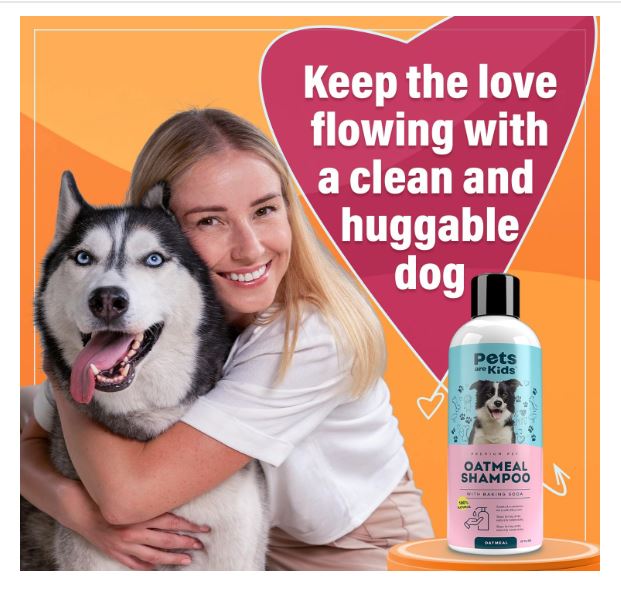Is Your Dog Scratching Due to Fleas? Effective Treatment Options

Is Your Dog Scratching Due to Fleas? Effective Treatment Options
-
Table of Contents
Introduction
Is your dog scratching excessively? It could be due to fleas. Fleas are a common parasite that can cause discomfort and irritation for your furry friend. In this article, we will discuss effective treatment options for flea infestations in dogs.
Preventing Flea Infestations in Your Home and on Your Pets
If you have a dog, you know how frustrating it can be to see them constantly scratching and biting at their skin. One of the most common causes of this behavior is fleas. These tiny parasites can wreak havoc on your pet’s skin, causing itching, irritation, and even allergic reactions. In addition to being a nuisance for your furry friend, fleas can also infest your home, making life uncomfortable for both you and your pet. Fortunately, there are effective treatment options available to help you get rid of fleas and prevent future infestations.
One of the first signs that your dog may have fleas is excessive scratching or biting at their skin. You may also notice small red bumps or scabs on their skin, particularly around their neck, back, and tail. If you suspect that your dog has fleas, it’s important to take action quickly to prevent the infestation from spreading. There are several treatment options available, ranging from topical medications to oral medications to flea collars.
Topical medications are one of the most common and effective ways to treat fleas on your dog. These medications are applied directly to your pet’s skin, usually between their shoulder blades, and work by killing adult fleas and preventing new fleas from hatching. Some popular topical medications include Frontline, Advantage, and Revolution. These medications are typically applied once a month and provide long-lasting protection against fleas.
Oral medications are another effective treatment option for fleas. These medications are given to your dog in the form of a pill or chewable tablet and work by killing adult fleas and preventing new fleas from hatching. Some popular oral medications include Comfortis, NexGard, and Bravecto. These medications are typically given once a month and provide fast-acting relief from fleas.
Flea collars are another option for treating fleas on your dog. These collars are worn around your pet’s neck and work by releasing a small amount of insecticide that kills adult fleas and prevents new fleas from hatching. Some popular flea collars include Seresto and Hartz. Flea collars provide long-lasting protection against fleas and are a convenient option for pet owners.
In addition to treating your dog for fleas, it’s also important to take steps to prevent future infestations. One of the best ways to prevent fleas is to keep your home clean and free of clutter. Vacuuming regularly, washing your pet’s bedding, and keeping your yard tidy can help reduce the risk of fleas infesting your home. You should also consider using a flea preventative on your dog year-round to keep them protected from fleas.
Overall, fleas can be a nuisance for both you and your pet, but with the right treatment options, you can effectively get rid of fleas and prevent future infestations. Whether you choose a topical medication, oral medication, or flea collar, there are plenty of options available to help keep your dog flea-free. By taking proactive steps to treat and prevent fleas, you can ensure that your pet stays happy and healthy.
Effective Flea Treatment Options for Dogs

If you’ve noticed your dog scratching more than usual, it could be a sign of a flea infestation. Fleas are tiny parasites that feed on your dog’s blood, causing irritation and discomfort. Not only are they annoying for your furry friend, but they can also lead to more serious health issues if left untreated. So, what can you do to help your dog find relief from these pesky pests?
The first step in treating a flea infestation is to confirm that fleas are indeed the culprit behind your dog’s scratching. One way to do this is by examining your dog’s fur for signs of fleas or flea dirt. Flea dirt looks like small black specks and is actually flea feces. You can also use a flea comb to check for live fleas on your dog’s skin. If you find evidence of fleas, it’s time to take action.
There are several effective treatment options available for dogs with fleas. One of the most common treatments is a topical flea medication that is applied directly to your dog’s skin. These medications typically contain ingredients that kill adult fleas and prevent new fleas from hatching. It’s important to follow the instructions on the product label carefully to ensure that you are using the medication correctly.
Another option for treating fleas is an oral flea medication. These medications are taken by mouth and work to kill fleas from the inside out. Oral flea medications are often preferred by pet owners who have difficulty applying topical treatments to their dogs. However, it’s important to consult with your veterinarian before starting any new medication to ensure that it is safe for your dog.
In addition to topical and oral flea medications, there are also flea collars available that can help protect your dog from fleas. Flea collars release chemicals that repel and kill fleas, providing long-lasting protection for your furry friend. It’s important to choose a flea collar that is safe and effective for your dog’s size and breed.
If your dog has a severe flea infestation, you may need to treat your home as well. Fleas can lay eggs in carpets, furniture, and bedding, leading to a cycle of infestation that is difficult to break. Vacuuming regularly and washing your dog’s bedding in hot water can help eliminate fleas and their eggs from your home.
It’s important to remember that preventing fleas is just as important as treating them. Regularly grooming your dog and keeping their living environment clean can help reduce the risk of a flea infestation. Additionally, using a monthly flea preventative can help protect your dog from fleas year-round.
In conclusion, if your dog is scratching due to fleas, there are several effective treatment options available. From topical medications to oral flea preventatives, there are solutions to help your furry friend find relief from these pesky parasites. Remember to consult with your veterinarian before starting any new flea treatment and to take steps to prevent future infestations. With the right care and attention, you can help your dog live a flea-free life.
Identifying Fleas as the Cause of Your Dog’s Scratching
If you’ve noticed your dog scratching more than usual, it’s important to consider the possibility of fleas as the culprit. Fleas are a common parasite that can cause discomfort and irritation for your furry friend. Identifying fleas as the cause of your dog’s scratching is the first step in finding effective treatment options.
One of the telltale signs of fleas is excessive scratching, biting, or licking. If you notice your dog constantly scratching at their skin, especially around the neck, back, and tail areas, it’s likely that fleas are to blame. Fleas are tiny, wingless insects that feed on the blood of animals, including dogs. They can be difficult to spot with the naked eye, but you may be able to see them moving around in your dog’s fur or on their skin.
Another sign of fleas is “flea dirt,” which is actually flea feces. Flea dirt looks like small black specks or grains of sand and can often be found on your dog’s skin or in their bedding. To determine if the specks are flea dirt, place them on a damp paper towel. If the specks turn red, it’s a sign that they are flea dirt, as flea feces contain blood from your dog.
If you suspect that your dog has fleas, it’s important to take action quickly to prevent the infestation from getting worse. There are several effective treatment options available to help eliminate fleas and provide relief for your dog.
One of the most common treatments for fleas is topical flea medication. These medications are applied directly to your dog’s skin and are designed to kill adult fleas and prevent new fleas from hatching. Topical flea medications are typically applied once a month and are available over-the-counter or through your veterinarian.
Another effective treatment option for fleas is oral flea medication. These medications are taken orally by your dog and work to kill fleas from the inside out. Oral flea medications are often prescribed by veterinarians and can provide fast relief for your dog.
In addition to medication, it’s important to treat your home and yard for fleas to prevent reinfestation. Fleas can lay eggs in carpets, furniture, and bedding, so it’s important to thoroughly clean and vacuum these areas regularly. You can also use flea sprays or foggers to kill fleas in your home.
Regular grooming and bathing can also help prevent fleas from infesting your dog. Bathing your dog with a flea shampoo can help kill adult fleas and soothe irritated skin. Regular grooming can also help you spot fleas or flea dirt early on before the infestation gets out of control.
Overall, identifying fleas as the cause of your dog’s scratching is the first step in finding effective treatment options. By taking action quickly and using a combination of medication, home treatment, and grooming, you can help eliminate fleas and provide relief for your furry friend. Remember to consult with your veterinarian for the best treatment plan for your dog’s specific needs.
Conclusion
Conclusion: Identifying the cause of your dog’s scratching is crucial in providing effective treatment. If you suspect fleas are the culprit, there are various treatment options available to help alleviate your dog’s discomfort and eliminate the infestation. Consult with your veterinarian to determine the best course of action for your furry friend.


